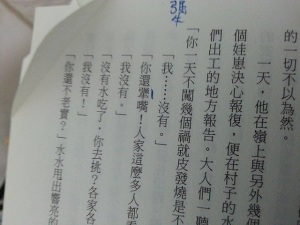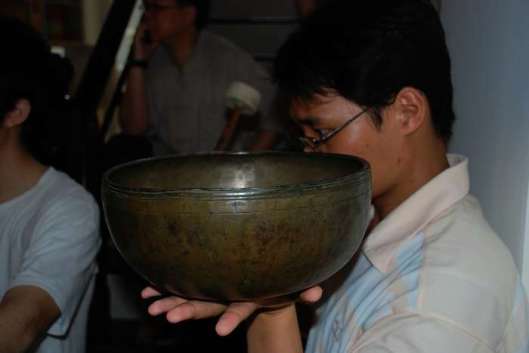I found this version of 夜 in Roan Ching-yue’s 《哭泣哭泣城》 The Sobbing City, from which I translated ‘The Pretty Boy from Hanoi’ in a previous post: 
Does anyone know what font this is? All the fonts I have on my computer have both their legs – I like the elegance of this form of 夜 though. Anybody familiar with it? Comment below.
By the way, I’m planning a few more translations from this collection of short stories, so look out for them over the coming months.
For Chinese font watchers, I recently came across this book in a Taipei book store.

I had a little flick through – though budget constraints prevented me from buying it yet. From what I saw it explains variations in the use of font in shop, road and MRT signs, looks to be an interesting read.
Dafont has some additional Chinese fonts for those interested.




